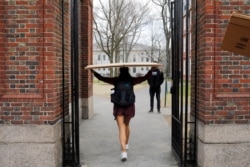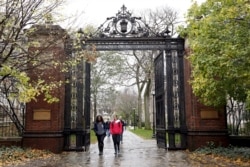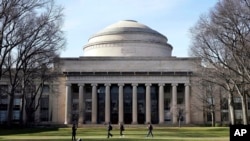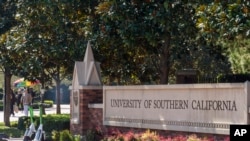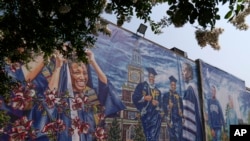Student Union
Universities Try to Keep Students Apart but Together
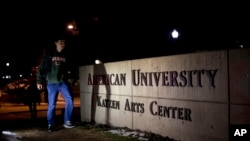
Frank Strong, chancellor of the University of Kansas, made a simple, but official, statement proclaiming the university closed.
“By authority and direction of the state board of health, there will be no classes in the university beginning at noon today, October 8,” he wrote in the university’s paper. “The university will reopen Tuesday, October 15, unless notice is given to the contrary.”
But it wasn’t just one week of closure; it turned out to be five. Strong was dealing with the influenza outbreak of 1918, first discovered in the United States in Haskell County, Kansas, “an isolated and sparsely populated county in the southwest corner of the state.”
More than 100 years later, colleges and universities are dealing with the same health crisis: a flu pandemic that stopped higher education almost overnight. The difference this time is, instead of hundreds of students attending school together, institutions are grappling with how to accommodate hundreds of thousands. That includes more than 1 million students from outside the U.S.
Carlo Ciotoli, M.D., New York University’s associate vice president for student health and executive director of the Student Health Center, is walking in Strong’s shoes. After notifying the NYU community in January 2020 about COVID-19, the disease caused by the coronavirus, people continued to crowd into bars and restaurants, and masks were limited to health care, not streetwear. New York was a hot spot. Students still traveled by plane and mass transit around the planet. States in different parts of the country opened up, then closed when flu rates rose.
Meanwhile, colleges and universities scrambled to respond. Some sent students home for a break, then required them to return to clean out their rooms. Study abroad students were unsure whether to stay or go. Educators, students and parents scrambled to adapt, finally shutting down to figure out how to respond for the fall semester.
So far, 61 percent of schools across the country have decided that students will return to campus.
The dilemma remains: How to keep students safe while not going bankrupt.
On-campus classes
Public and private schools including Harvard University and Boston University in Massachusetts, the College of William and Mary in Virginia, Elon University in North Carolina, the University of North Carolina at Chapel Hill, Kenyon College and Ohio State University in Ohio, Pepperdine University in California, Tulane University in New Orleans, the University of Arizona, and Washington University in St. Louis, all plan on having students on campus, according to the Chronicle for Higher Education, an education news site.
Some universities are starting late, like the University of Florida, while others, like the University of Notre Dame in Indiana, are beginning early, and completing final exams by Thanksgiving.
Other schools, like American University in Washington, D.C., will hold hybrid classes this fall, meaning that course instruction will be online and in person.
For AU, classes that are held in a lab will be given priority for in-person learning, while “more traditional lectures” will follow the hybrid model including a combination of some in-person classes, online work and live streams.
Yale University said it plans to reopen its campus this fall without sophomores, and return in the spring without freshmen, according to its website.
Harvard announced that it will “bring up to 40 percent of undergraduates to campus for the fall semester, including all first-year students,” according to the university’s website.
Princeton University stated that first-year students and juniors will be on campus for the fall, while sophomores and seniors will return in the spring. According to the university’s website, “most academic instruction will remain online.”
Some larger institutions are unable to follow these guidelines, but others, like the University of Colorado at Boulder, are finding unique solutions. CU Boulder plans for students to live and take courses as a group.
“In a regular semester, they may have 40 or 50 different students that they would be interacting with rather than just 10,” Philip DiStefano, the Boulder campus chancellor, told CNN. “And we believe that by reducing that population density, we’ll certainly help to mitigate some of the problems with the virus.”
How to house students apart
Students returning to school in the fall will face a reduced collegiate experience: Partying, sharing bathrooms and just sitting in a dining hall with friends are among the luxuries students will not be afforded when the semester begins. This fall, with proper social distancing guidelines put in place, students’ social lives are likely to be very different than ever before.
Many universities are offering campus housing to freshmen and some upperclassmen and asking other students to find housing off campus.
AU’s on-campus housing will only be provided for freshmen and “some” sophomores.
The University of Pennsylvania will provide on-campus housing for first year, second year, and transfer undergraduates, and lease additional space off campus for third- and fourth-year undergraduate students.
Juniors and seniors at Yale may choose to live on campus or not.
The American College Health Association has advised that universities should house “single resident per room and ideally per bathroom (if possible).”
But most colleges traditionally offer on-campus housing to two, three or four to a room with a communal toilet and bathroom used by an entire dorm floor.
Applications and admissions
The application process is changing, too. Colleges and universities are looking at student attributes differently.
More than 300 U.S. colleges and universities have endorsed Harvard’s Graduate School of Education statement that “seeks to clarify what we value in applicants during this time of COVID-19.”
Besides the usual academic work, service and contributions to others, family contributions and extracurricular activities, schools are asking about summer activities and “self-care.”
“We encourage students to communicate any factors specific to their circumstances that impeded their academic performance,” the statement recommended. “We encourage students to describe concretely how any of these circumstances have negatively affected their academic performance or ability to engage in activities that matter to them.”
See all News Updates of the Day
US remains top choice for Indian students going abroad

About 69% of Indian students traveling abroad for their studies chose the United States, according to a Oxford International’s Student Global Mobility Index. Other popular choices were the United Kingdom, Canada and Australia.
Education Times reports the main influencers for deciding where to study abroad – for Indian students and others – were parents. (April 2024)
Malaysian official: Schools can’t turn away from global tensions

Zambry Abdul Kadir, Malaysia’s higher education minister, said protests spreading across universities in the United States show that schools can’t ignore political tensions.
Helen Packer, reporting in Times Higher Education, said the minister reminded educators that universities are key in the development of leaders, individuals and societies. (April 2024)
Social media breaks are difficult, but necessary

Between online classes, maintaining social connections and working on projects, college students can have a hard time disengaging from the demands of technology.
In Florida International University’s PantherNOW, Ariana Rodriguez offers strategies for taking a break from social media. (April 2024)
- By Melos Ambaye
Many master's degrees aren't worth the investment, research shows

Nearly half of master's degrees have a negative financial return, according to new research by the Foundation for Research on Equal Opportunity, an economic research organization.
The study indicates that many graduate degree programs do not increase lifetime earnings enough to be worth it.
While 23% of bachelor’s degree programs yield a negative financial return on investment, 43% of two-year degrees and master’s degrees fail to deliver a return, according to the study by Preston Cooper, a senior fellow at FREOPP.
Cooper assessed the return on investment for 53,000 degree and certificate programs to determine whether a student’s lifetime earnings outweigh program costs and the risk of not completing their degree.
His findings show that a student’s field of study was the overriding indicator of return on investment at the undergraduate and graduate level.
Engineering, computer science and nursing bachelor’s degrees have high financial returns on investment, while programs in education, fine arts, psychology and English usually have low returns.
Graduate degrees in medicine and law tend to have strong payoffs. But a large share of master’s programs, including the MBA, frequently have low payoffs, according to Cooper.
Although workers with master’s degrees earn 16% more than those with only bachelor’s degrees, Cooper says the figure fails to account for students who had “higher preexisting earnings potential.”
“MBA students typically have high preexisting earnings potential, having often chosen high-ROI undergraduate majors such as finance and economics,” Cooper writes. “So the MBA adds little value on top of that.”
The study indicates that high starting salaries are predictors of high returns on investment. Degrees with starting salaries of $57,000 a year or more deliver the best lifetime returns.
But the return on investment of a degree can vary depending on the educational institution.
“Students interested in fields with low average pay can still find some schools that do well transforming those fields of study into high-paying careers,” Cooper writes.
The quality of an institution also matters, said William Tierney, professor emeritus of higher education at the University of Southern California.
“An MBA from Harvard is a likely ticket to a good job,” Tierney told VOA. “An MBA from the University of Phoenix, less so.”
But students pursue graduate programs for more than just financial reasons.
“Some degrees open up careers in fields that students may enjoy, such as in the performing arts,” Robert Kelchen, head of educational leadership at the University of Tennessee, Knoxville, told VOA.
“Others can help gain access to social networks or simply help students learn about a topic that is of interest,” Kelchen added.
Cooper told VOA that it might make sense for students in degree programs with low returns on investment to switch majors if they can still graduate on time.
He found the worst outcome for a student’s return on investment is dropping out of college “because they must pay for one or more years’ tuition and spend time out of the labor force.”
Lawmakers who fund higher education have a responsibility in ensuring “higher education delivers on its promise of economic mobility,” Cooper said.
Nearly a third of federal funding, including Pell grants and student loans, pays for higher education programs that fail to provide students with a return on investment, according to the study.
Cooper’s view is that “some schools should shut down low-ROI programs and reallocate institutional resources to programs with a better return.”
“There's definitely this narrative out there that higher education is always worth it, and you should always try to get that extra degree because it will increase your earnings,” he told VOA. “That's reinforced by colleges who make lofty promises regarding their graduate degree programs' outcomes, which all too often fall short.”
Harvard students end protest as school agrees to discuss Gaza conflict

Protesters against the war between Israel and Hamas were voluntarily taking down their tents in Harvard Yard on Tuesday after university officials agreed to discuss their questions about the endowment, bringing a peaceful end to the kinds of demonstrations that were broken up by police on other campuses.
The student protest group Harvard Out of Occupied Palestine said in a statement that the encampment "outlasted its utility with respect to our demands." Meanwhile, Harvard University interim President Alan Garber agreed to pursue a meeting between protesters and university officials regarding the students' questions.
Students at many college campuses this spring set up similar encampments, calling for their schools to cut ties with Israel and businesses that support it.
The Israel-Hamas war began when Hamas and other militants stormed into southern Israel on October 7, killing some 1,200 people and taking 250 hostages. Palestinian militants still hold about 100 captives, and Israel's military has killed more than 35,000 people in Gaza, according to Gaza's Health Ministry, which doesn't distinguish between civilians and combatants.
Harvard said its president and the dean of the Faculty of Arts and Sciences, Hopi Hoekstra, will meet with the protesters to discuss the conflict in the Middle East.
The protesters said they worked out an agreement to meet with university officials, including the Harvard Management Company, which oversees the world's largest academic endowment, valued at about $50 billion.
The protesters' statement said the students will set an agenda that includes discussions on disclosure, divestment, reinvestment and the creation of a Center for Palestine Studies. The students also said that Harvard has offered to retract suspensions of more than 20 students and student workers and back down on disciplinary measures faced by 60 more.
"Since its establishment three weeks ago, the encampment has both broadened and deepened Palestine solidarity organizing on campus," a spokesperson for the protesters said. "It has moved the needle on disclosure and divestment at Harvard."




